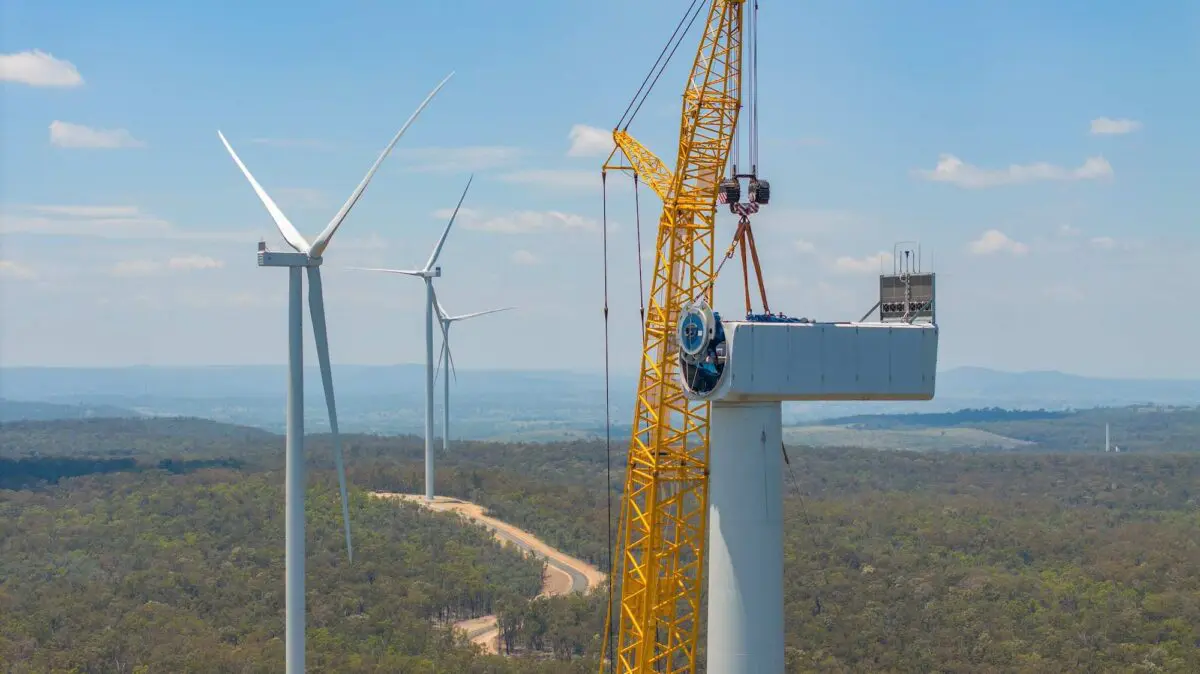In the same week scientists warn the world may hit 2.7°C of warming, even if governments meet their emissions goals, a separate report has warned that the global shift to renewables has quickened, but still not at the rate fast enough to address the worst impact of climate change.
The International Energy Agency’s Renewables 2024 finds the world is headed for record installations of wind and solar in 2024, after a record year in 2023, but is still tracking well behind the pace needed to curb dangerous global warming.
The annual report tracks the world’s progress towards tripling the world’s installed renewable energy capacity to at least 11,000 GW by 2030 – a goal that nearly 200 national governments have signed up to since the COP 28 climate talks in Dubai.
This year, the IEA puts global renewable capacity on track to grow by 2.7 times by 2030, “not quite sufficient” to reach the COP 28 tripling goal, says the IEA. If you heed the warnings of the world’s leading climate scientists , it is far from sufficient to prevent pushing Earth past critical climate tipping points.

“The main-case renewable electricity forecast is not on track to reach the IEA Net Zero Emissions by 2050 Scenario goals, which indicate that the share of renewables in global electricity generation should double to almost 60% by 2030,” the report says.
“Thus, the main-case forecast falls 14 percentage points (5 000 TWh) below Net Zero by 2050 Scenario modelling.”
The IEA says several key challenges are holding back renewable energy growth, citing policy uncertainties and implementation challenges involving financing, permitting, social acceptance, as well as grid integration, as persistent and significant obstacles.
“Enhancing policy frameworks and regulatory environments to mobilise private capital more effectively will be necessary to remedy these issues,” the report says.
“Without these measures, the gap between current growth trajectories and the Net Zero by 2050 Scenario pathway will persist, underscoring the urgency for governments to meet implementation challenges and raise their ambitions.”
The other key message from the report, however, is that progress is being made – and progress is something that can be built upon.
The main-case forecast expects renewable capacity additions to increase almost 20% in 2024 – which means another record year. And the rate of growth in annual renewable capacity additions is expected to continue to continue to increase, from 666GW in 2024 to almost 935GW in 2030 – which is 70% more than the record level achieved last year.
This progress, says the IEA, “signals an opportunity for countries to announce enhanced ambitions in the next round of Nationally Determined Contributions (NDCs) due in 2025.
“In our main case, nearly 70 countries, which collectively account for 80% of global capacity, reach or surpass their current ambitions for 2030. China drastically dominates among these overachievers, but other major economies, such as Brazil, India and the United States, also contribute.”
The data was seized upon by some analysts as a sign of progress. Tim Buckley, from Climate and Energy Finance, put it down to the falling costs of solar and battery firming costs.
“Thanks largely to China, we now have the global cleantech manufacturing capacity to accelerate deployments of renewables significantly to achieve the trebling goal,” he wrote on LinkedIn.
“The massive deflation of prices for renewables technologies and the drive for energy security both favour accelerating investment as the world looks to mitigate the escalating climate crisis of climate change.”
How is Australia tracking? According to the IEA, Australia quadrupled its variable renewable energy (VRE) share in 2016-2023 and is expected to further double it by 2030, making it “one of the global pioneers in managing high VRE energy systems.” No small thing.

The report forecasts that Australia will add 53 GW of renewable capacity in 2024-2030, with a nearly 65% share of solar PV, split between utility-scale (55%) distributed applications (40%) and systems dedicated to hydrogen production (5%).
“Expanding state- and federal-level auctions, rising corporate demand and the high competitiveness of solar PV systems drive dynamic renewables growth,” the IEA says.
Other points of interest in the report include a check-up on energy storage, which estimates that more than 540GW of standalone battery storage projects are currently in grid connection queues in the United States, the United Kingdom, Australia, Spain and Chile.

“Of this capacity, over 55 GW is in late-stage development, with the United States having the highest amount (64%), followed by Spain (19%), the United Kingdom (12%), Australia (5%) and Chile (less than 1%).”
Another notable addition to this year’s report is that it includes – for the first time – a country-level forecast for electrolyser deployment to 2030 to assess the extent to which hydrogen production is a driver of new renewable capacity.

To this end, global installed electrolyser capacity is forecast to increase by 47 GW over 2024-2030, reaching almost 50GW by the end of the decade. More than half of this total (59%) is expected to be installed in China and Europe, while close to 40% is spread across the Middle East and North Africa, India, the United States and Australia.
On policy levers, the report notes that establishing criteria for awarding renewable power capacity beyond just prices is emerging as a new tool, with almost 60% of all capacity awarded in auctions worldwide in the first half of 2024 including non-price criteria, like supply chain security or energy system integration.
“While this approach may lead to higher awarded prices in the short term, it can support energy system optimisation and various socio-economic goals at the domestic level,” the report says.







